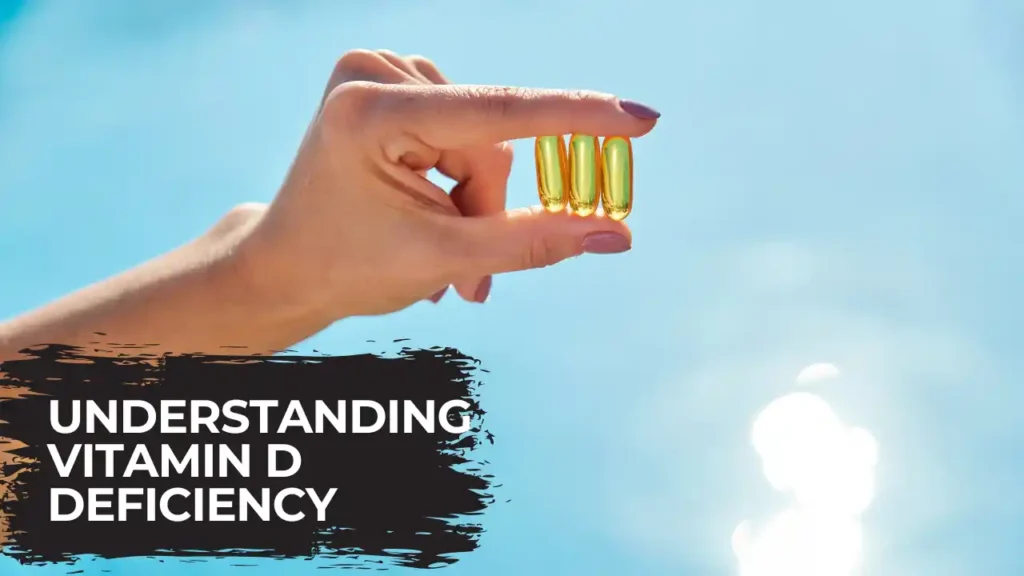Vitamin D deficiency is more common than you might think, and it can have a significant impact on your overall health. Known as the “sunshine vitamin,” Vitamin D plays a crucial role in maintaining bone health, boosting your immune system, and even improving mood. If you’ve been feeling unusually tired or experiencing muscle weakness, you might be lacking this essential nutrient. Fortunately, doctors have clear recommendations to help you restore and maintain healthy Vitamin D levels. Let’s dive into the top five doctor-recommended ways to treat Vitamin D deficiency.
Understanding Vitamin D Deficiency
Causes of Vitamin D Deficiency
There are several reasons why someone might be deficient in Vitamin D:
- Lack of Sunlight Exposure: Your skin produces Vitamin D when exposed to sunlight. Limited outdoor activities or living in northern latitudes can reduce this natural production.
- Dietary Insufficiencies: A diet lacking in Vitamin D-rich foods, such as fatty fish and fortified dairy products, can contribute to low levels.
- Medical Conditions: Some conditions, such as Crohn’s disease or celiac disease, can interfere with Vitamin D absorption.
Identifying the Symptoms
Common symptoms include:
- Bone Pain and Muscle Weakness: These are the most noticeable signs.
- Fatigue and Mood Changes: Low energy and even depression can be linked to Vitamin D deficiency.
- Severe Cases: In children, this can cause rickets, and in adults, it may lead to osteomalacia—softening of the bones.

Top 5 Doctor-Recommended Ways to Treat Vitamin D Deficiency
1. Increase Sunlight Exposure
The most natural way to boost Vitamin D is through sunlight.
- Best Times for Sun Exposure: Aim for about 10–30 minutes of midday sun several times a week, depending on your skin type and location.
- Precautions: Too much sun exposure can increase the risk of skin cancer, so balance is key. Use sunscreen after the initial exposure time.
2. Incorporate Vitamin D-Rich Foods
Your diet can significantly impact your Vitamin D levels.
- Top Foods High in Vitamin D:
- Fatty fish like salmon, tuna, and mackerel
- Fortified dairy products and cereals
- Eggs and beef liver
- Tips for a Balanced Diet: Combine these foods with healthy fats for better absorption.
3. Vitamin D Supplements
Sometimes, diet and sunlight aren’t enough, and supplements are necessary.
- Types of Supplements Available: Vitamin D2 (ergocalciferol) and Vitamin D3 (cholecalciferol). D3 is generally preferred for raising levels more effectively.
- Recommended Dosages: The standard dose varies, but for deficiency, doctors often recommend 1,000–2,000 IU daily. Consult a healthcare provider for personalized advice.
- Possible Side Effects: Excessive supplementation can lead to toxicity, causing symptoms like nausea and kidney damage.
Read This too : How Do You Build Muscle With High Metabolism?
4. Medical Treatments and Monitoring
For severe deficiencies, medical intervention may be required.
- When to Seek Professional Help: If symptoms persist despite lifestyle changes, it’s time to consult a doctor.
- Blood Tests and Assessments: Regular monitoring through blood tests ensures that treatment is effective and levels are within a healthy range.
5. Lifestyle Adjustments
A holistic approach enhances Vitamin D absorption.
- Importance of Regular Exercise: Weight-bearing exercises, like walking or jogging, help maintain bone density.
- Synergy with Calcium Intake: Vitamin D works with calcium to strengthen bones, so ensure your diet includes calcium-rich foods.
Visit : Can Weight Gain Really Cause Back Pain?
Preventing Future Deficiencies
- Maintaining healthy Vitamin D levels is easier than correcting a deficiency.
- Daily Habits: Include sunlight exposure, a balanced diet, and supplements if needed.
- Seasonal Considerations: In winter, consider a higher intake of fortified foods or supplements due to reduced sunlight.
Conclusion
Treating Vitamin D deficiency doesn’t have to be complicated. By following these doctor-recommended strategies—sunlight, diet, supplements, medical advice, and lifestyle changes—you can restore and maintain healthy levels. Prioritizing your Vitamin D intake is an investment in your long-term health and well-being.
FAQs
1. What is the main cause of Vitamin D deficiency?
The most common cause is insufficient sunlight exposure, especially in colder climates.
2. How long does it take to correct a deficiency?
It can take a few weeks to several months, depending on the severity and treatment plan.
3. Can too much Vitamin D be harmful?
Yes, excessive Vitamin D can cause toxicity, leading to nausea, kidney issues, and more.
4. Is sunlight exposure enough to maintain levels?
For some people, yes, but factors like skin type and location can affect production.
5. What’s the difference between Vitamin D2 and D3?
Vitamin D3 (from animal sources) is more effective than D2 (from plant sources) at raising blood levels.
Visit Our Facebook
Read this too : Healthy Eating on a Budget: Tips to Save Money and Eat Well, Is Zinc the Secret Ingredient for Better Health?”



